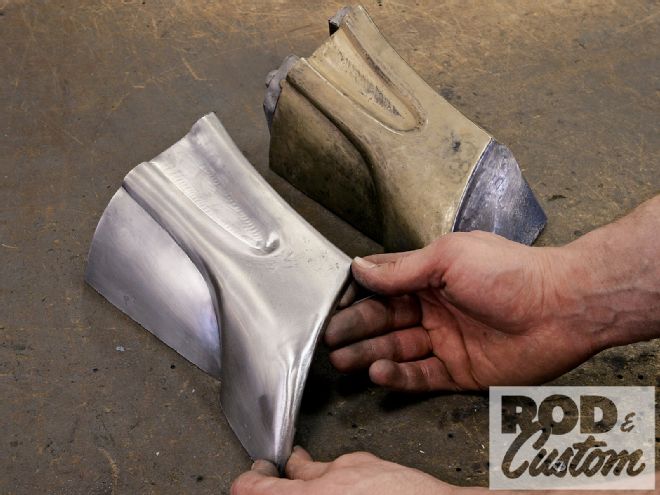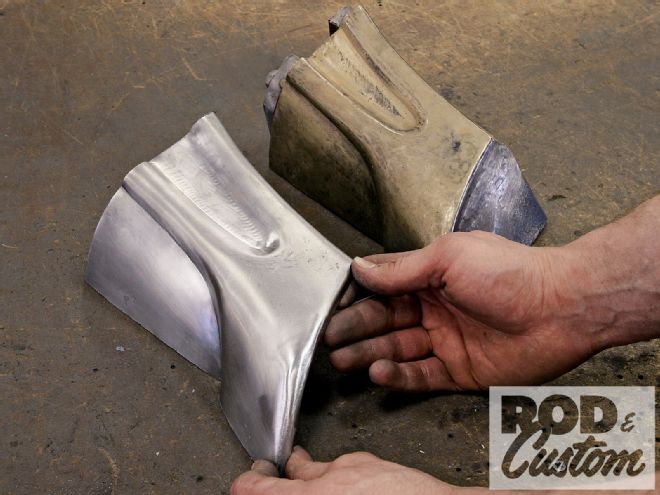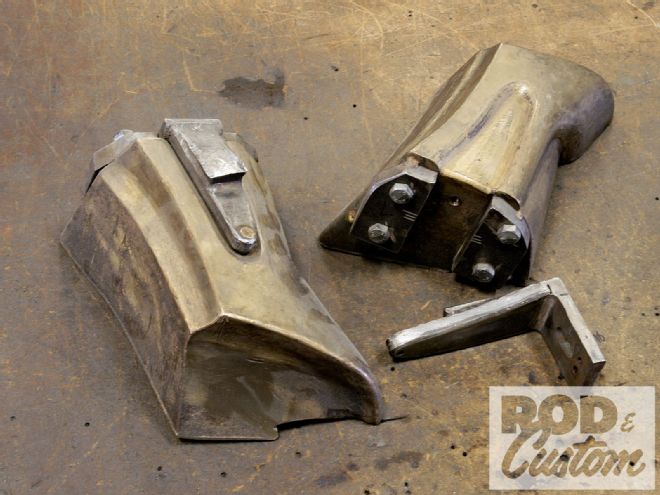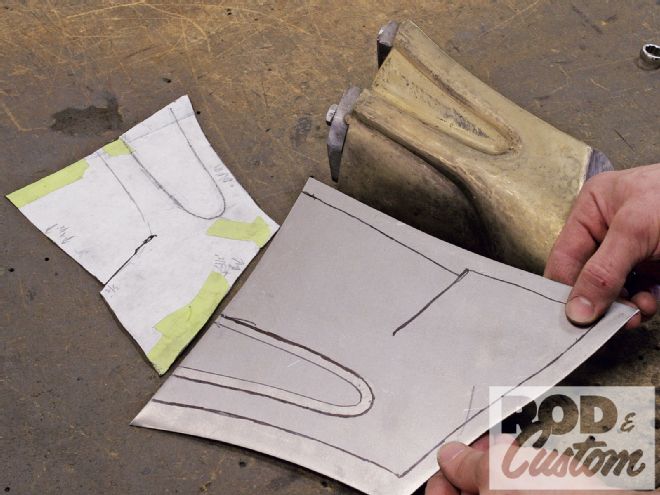
The image of a 1932 Ford three-window coupe with bad trunk corners should accompany the definition of a mixed blessing. Many consider the model the most desirable closed car from what's arguably the most celebrated year in Ford's history, and the prices prove it. But those two small patches of real estate at the back of the body can really cause problems.

What makes them so troublesome is a result of what makes the car exceptional: uniqueness. Like the corners on other cars of the year they rust out and get banged up. But unlike the five-window, which enjoys a healthy crossover reproduction market since much of it resembles the well-attended roadster, the three-window stands alone. Making matters worse is the fairly complex shape of the three-window's trunk corners; many honest pros would admit that it's beyond even their capabilities.
 The foundation of the process is a simple bronze hammer-forming die-actually two of them; one for each side. These dies were made from plaster impressions taken from the inside of virgin quarter-panels.
The foundation of the process is a simple bronze hammer-forming die-actually two of them; one for each side. These dies were made from plaster impressions taken from the inside of virgin quarter-panels.
Yet there's hope. Many know Steve's Auto Restorations for the hot rods it builds, but, as its name suggests, the shop's roots are in restoration. After noting a trend in rotten three-window trunk corners, Steve Frisbie tooled up to make exact reproductions of them.
The methods used to produce them differ considerably than those employed to make the company's hallmark Model 40 coupe and roadster bodies. Whereas it takes OEM-scale tooling to produce a complete body, the shop reverts to traditional coach-building techniques to craft these smaller trunk corners. If nothing else, the process reflects old-world techniques that artisans used to make some of the most esteemed exotic cars over the past century.
 Like almost all panels, these corners start as a single piece of sheetmetal. Colton Hardison marked and trimmed it based on shapes laid out on a paper template.
Like almost all panels, these corners start as a single piece of sheetmetal. Colton Hardison marked and trimmed it based on shapes laid out on a paper template.
What follows is not a how-to as much as a how-do, as in how do things like this take shape in the hands of mere mortals. We have another agenda by showing this process: Just as we suggested, the image of a three-window with rusty corners should accompany the definition of mixed blessing; we propose the following images should accompany another definition, like that for prayers answered. Buy a three-window coupe with rusty trunk corners and you'll know exactly what we mean.